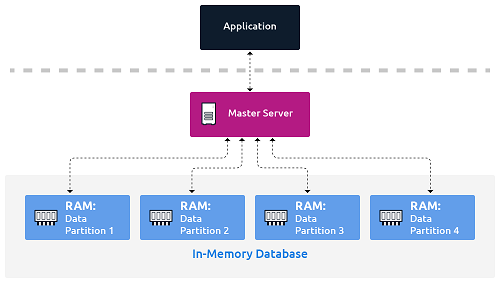In-Memory Database Market Overview:
The in-memory database market is experiencing a surge, driven by the ever-growing need for real-time data processing and analytics. This technology stores data entirely or partially in a computer's main memory (RAM) for ultra-fast access and manipulation. This article delves into the current market landscape, exploring its competitive landscape, key drivers and restraints, along with valuable segmentation and regional analysis. The In-Memory Database Market size is expected to reach USD 35.08 Billion by 2032, growing at a CAGR of 18.70% during the forecast period 2024-2032.
Competitive Analysis:
The in-memory database market boasts a dynamic mix of established players and innovative startups. Leading companies include,
- IBM
- Microsoft
- Oracle
- SAP
- TIBCO Software.
These giants offer robust in-memory database solutions catering to diverse industry needs. However, nimble startups are making their mark with disruptive technologies and flexible deployment models. This fosters a healthy competitive environment, pushing boundaries in performance, scalability, and cost-effectiveness.
Get a sample PDF of the report at –
https://www.marketresearchfuture.com/sample_request/4882
Market Drivers:
Several factors are fueling the in-memory database market's growth. The paramount driver is the escalating demand for real-time data processing. Industries like fraud detection, stock trading, and online transactions rely on instantaneous data insights for optimal decision-making. In-memory databases deliver lightning-fast response times, enabling real-time analytics and operational efficiency.
Furthermore, the Internet of Things (IoT) is generating massive amounts of data. Traditional databases struggle to handle this data deluge, leading to processing bottlenecks. In-memory databases offer a compelling solution, efficiently storing and analyzing this real-time data stream, empowering businesses to unlock valuable insights and optimize operations.
The growing adoption of Artificial Intelligence (AI) and Machine Learning (ML) is another significant driver. These technologies thrive on large datasets and require fast access for training and processing. In-memory databases provide the necessary speed and scalability, making them a critical component of the AI/ML infrastructure.
Market Restraints:
While offering undeniable advantages, the in-memory database market also faces some restraints. The primary concern is cost. In-memory databases necessitate substantial RAM capacity, which can be expensive for large deployments. Additionally, data persistence remains a challenge. Since RAM is volatile, data stored there is lost upon power outages. Businesses need to implement robust disaster recovery solutions to mitigate this risk.
Segment Analysis:
The in-memory database market is segmented based on various factors, including application, deployment model, and industry vertical. By application, the market is divided into transaction processing, reporting, analytics, and others. Transaction processing caters to high-volume, real-time transactions, while reporting and analytics focus on data analysis and visualization.
Deployment models encompass on-premise and cloud-based solutions. On-premise deployments offer greater control but require significant infrastructure investment. Cloud-based solutions provide scalability and flexibility, making them attractive for many businesses. Industry verticals with the highest in-memory database adoption include finance, retail, healthcare, and manufacturing. These sectors heavily rely on real-time data insights for improved decision-making and operational efficiency.
Browse a Full Report –
https://www.marketresearchfuture.com/reports/in-memory-database-market-4882
Regional Analysis:
The in-memory database market exhibits a varied growth pattern across different regions. North America currently holds the largest market share due to the presence of major technology players and a strong focus on innovation. However, Asia Pacific is expected to witness the fastest growth rate in the coming years. This is driven by factors like rapid economic development, increasing IT infrastructure adoption, and a growing demand for real-time analytics across various industries.
Europe and the rest of the world are also expected to experience significant growth in the in-memory database market. As businesses become increasingly data-driven, the need for faster data processing and real-time insights will continue to propel market expansion globally.
The in-memory database market is poised for significant growth in the years to come. Fueled by the demand for real-time data processing, AI/ML adoption, and the proliferation of IoT devices, this technology is transforming how businesses manage and analyze data. While cost considerations and data persistence remain challenges, continuous innovation and advancements in memory technology are paving the way for a future where in-memory databases become the norm for organizations seeking lightning-fast data access and real-time insights.
Top Trending Reports:
Contact
Market Research Future (Part of Wantstats Research and Media Private Limited)
99 Hudson Street, 5Th Floor
New York, NY 10013
United States of America
+1 628 258 0071 (US)
+44 2035 002 764 (UK)
Email: [email protected]
Website: https://www.marketresearchfuture.com
